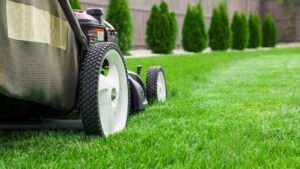Window tints offer a variety of benefits, including UV protection, glare reduction and energy efficiency. In addition, tints help to hold broken glass together in the event of an accident and prevent dangerous shards from flying around.

Before applying your tint, roll up the window and spray it with soapy water. Determine which side has adhesive and make sure this is facing the window. Contact Pro Window Tinting Wichita for professional help.
While you may take precautions such as applying sunscreen on your skin before driving in the sun, tinting your vehicle’s windows goes even further to protect against UV radiation. Window tints block harmful UVB and UVA rays that cause sunburn, fade car upholstery and flooring, and damage the skin and eyes.
Tinted windows also significantly reduce the amount of heat that enters a vehicle’s cabin. This results in a more comfortable interior, which can be beneficial for both the driver and passengers. The cooler cabin temperature can also help to cut energy costs by reducing the need to run your air conditioner as often.
As a bonus, window tints can help to hold shattered glass in place after an accident, protecting the driver and passengers from sharp shards. Window tint is also designed to resist scratches and scuffs, and is easy to wipe down with mild soap to keep it clean.
There are many different kinds of window tint, and the right one for your needs will depend on your preferences and priorities. Some types of tint are clear, while others have a dark appearance. There are also different levels of UV protection, glare reduction, and heat rejection offered by window tints.
The most budget-friendly option is dyed window tint, which sandwiches pigment between an adhesive layer and an outer protective coating. This type of tint is not as effective at absorbing solar energy and tends to fade over time, but it’s still an affordable way to add UV protection and enhance the appearance of your car.
Metalized film is another option that offers great UV protection as well as heat reduction and helps to strengthen the window’s structure. This type of tint is made with tiny metal particles that reflect the sun’s rays, including UV rays, and can have a shiny appearance. However, it is not as durable or fade-resistant as other tints and can interfere with signal transmission on some radios and phones.
Carbon window tint is another excellent choice because it offers great UV and infrared heat protection as well as glare reduction and is more durable than metalized tint. It also doesn’t interfere with signal transmission on some radios and smartphones, as metalized tint can sometimes do. Lastly, ceramic tint is a high-end tint that offers the best combination of durability, glare reduction, and UV protection without compromising on aesthetics.
Glare Reduction
Depending on the specific film, window tinting can provide glare reduction for home or commercial environments. Most films are designed with a low visible light transmission value (VLT) to reduce natural light, but with a soft and comfortable glow that helps avoid unwanted glares. This is especially important for office spaces where overly bright lighting can lead to eyestrain and discomfort, as well as distractions. It also provides a layer of protection against UV rays that can cause skin damage and premature aging.
In addition to reducing glare, window tints also reject infrared radiation to minimize heat gain. This is made possible by the same metalized layer mentioned above, which allows some of the sun’s energy to reflect off the windows rather than penetrate inside. This effectively reflects heat away from the vehicle or home, reducing the need for excessive air conditioning use and lowering energy consumption.
Window tinting can even help prevent fading of fabrics and other furnishings within a home or business, by blocking up to 100% of the harmful UV rays. This significantly extends the lifespan of draperies, carpets, artwork and other fabrics that may otherwise fade with exposure to sunlight. This helps to minimize replacement costs and also preserves the aesthetics of a property.
One of the most significant safety benefits of window tinting is its ability to help prevent blinding glare while driving at night. This can be caused by many things, such as bright streetlights or headlights from other vehicles that can momentarily distract and disorient drivers and lead to accidents. Window tint can significantly soften glare from these sources and help to make driving at night much safer, and more confident.
In addition to offering a variety of practical benefits, window tints can boost curb appeal by giving a sleek and modern look. Window tints are available in a range of different colors and levels of darkness, which means that they can be used to complement any style. They are also more durable than regular glass, and can resist shattering in the event of an accident or break-in attempt. However, it is essential to consult your local laws before opting for darker tints, as some areas have regulations regarding maximum allowed levels of window tint.
Energy Efficiency
As more and more homeowners seek to embrace sustainability, home window tinting emerges as a powerful tool to achieve that goal. Professional-grade tinting enables windows to efficiently reflect or absorb solar energy depending on the season, stabilizing indoor temperatures and lowering energy consumption. It also protects interior furnishings from harmful UV rays, prolonging their lifespan. This combination of comfort and cost-efficiency makes it an ideal choice for the Long Island homeowner looking to maximize sustainable living.
Window tint is available in a wide range of colors and shades, with each variation offering different benefits. Darker tints generally offer more protection against UV rays, while lighter tints let in more sunlight. Additionally, the VLT (visible light transmission) percentage of a window tint can have an impact on its energy efficiency. A lower VLT will block more of the sun’s heat, reducing air conditioning use during the summer. A higher VLT will allow more natural light to enter during the winter, reducing the need for artificial heating.
When installed correctly, window tint offers a number of energy-saving benefits, but it is crucial to work with a qualified professional. A trained technician will ensure that the film is applied evenly, eliminating any imperfections that could negatively affect energy savings. In addition, the film should be inspected regularly for signs of damage or peeling, as these can quickly diminish its energy-saving potential.
Aside from protecting passengers, window tint also helps prevent the car’s interior from fading, which can lead to costly repairs down the road. This is because the specialized coating acts as a barrier that prevents UV rays from penetrating through the windows and heating up the interior. It significantly reduces the need for a car’s air conditioning system, thus cutting fuel costs and greenhouse gas emissions while helping to maintain a comfortable driving experience.
Window tint can also improve safety and security by strengthening windows to withstand blunt force, such as a potential burglary or flying debris during a storm. Tinted windows also help to hold shattered glass together, preventing the spread of dangerous shards throughout the vehicle and its occupants.
Privacy
The window tinting options that are available to homeowners can provide privacy while protecting against the sun’s UV rays. However, not all of the options are created equal and they each have their pros and cons. When choosing the right window tint for your home, it’s important to think about what is most important to you. Each option offers a trade-off, so you’ll need to weigh the options against your personal needs and budget.
Tinted windows block light, which can help to prevent fading from sunlight on carpets, rugs and furniture. Additionally, window tints can reduce heat gain, which in turn will save on energy costs. Some window tints also add an aesthetic boost to a home’s exterior, creating a sleek and modern appearance.
Regardless of the type of window film chosen, it is important to choose a shade that is dark enough while still allowing for sufficient visibility from inside the house. The amount of light that passes through a window is referred to as variable light transmission (VLT), and different states have their own regulations concerning VLT percentage.
Dyed window tint is the cheapest option but provides little to no privacy and will fade over time. Ceramic window tint is more expensive but offers the best combination of privacy and energy efficiency, as well as providing increased protection from harmful UV rays. It also doesn’t interfere with cell phone signals.
Another great option for those looking for privacy without sacrificing natural light is frosted or textured window films, such as 3M’s Fasara line. These frosted and patterned films offer a variety of styles to choose from, diffusing light into a room while obscuring the view of inside. Some frosted and textured window tints can also boost security, stopping intruders from smashing and grabbing through windows.




